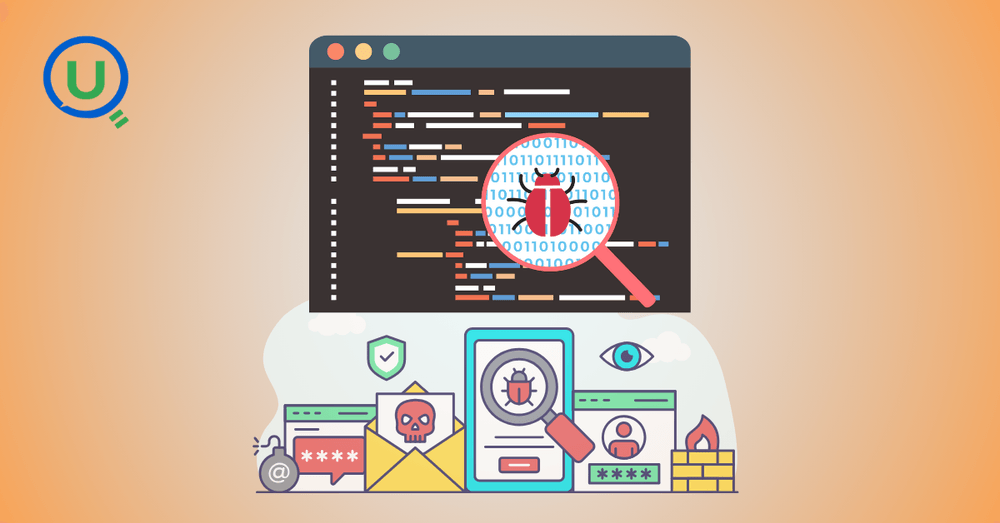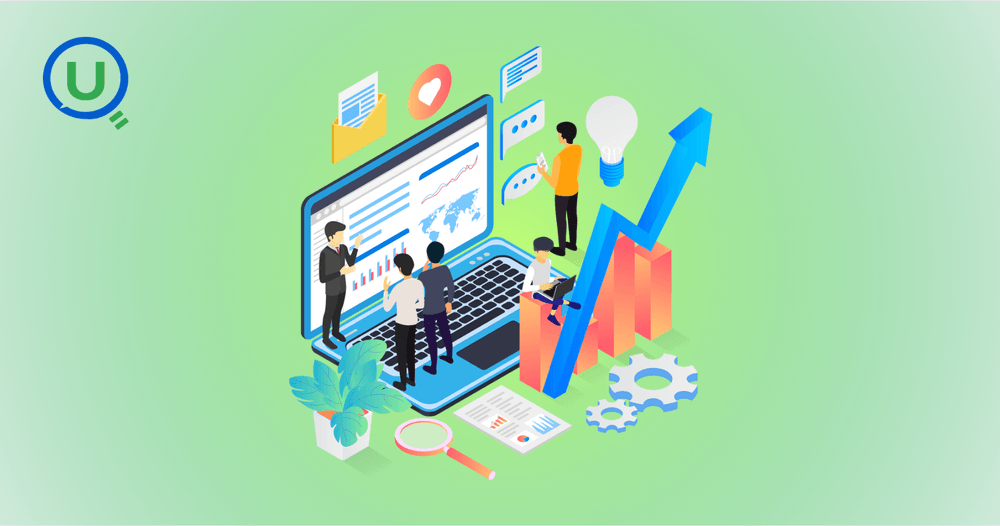Enqurious
Case Studies
Learn from successful data teams and apply their strategies to your own projectsRequest a Demo
Enqurious Helped $700M Enterprise AI Company Achieve 97% Certification Clearance Rate for Databricks and Snowflake Data Engineers
A $700M Enterprise AI Company sought to build a talent pool of industry-ready Databricks and Snowflake Data Engineers. The challenge was to develop a learning experience that went beyond certification exams, providing candidates with practical, real-world project experience. Enqurious partnered with the client to create a hands-on, scenario-driven learning path that increased certification clearance rates and equipped learners with real-world skills.
Problem Statement
The AI company had two primary objectives:
Certification Clearance Rate: The goal was to have learners achieve a high clearance rate for both Databricks and Snowflake certifications.
Real-World Project Exposure: The aim was to equip candidates with practical, industry-relevant skills, moving beyond just passing exams to becoming job-ready engineers. This practical experience was key to the client’s vision of developing capable data engineers who could seamlessly integrate into real-world business projects.
The challenge was to design an immersive, hands-on learning experience that not only prepared learners for certification but also provided them with the skills required for real-world data engineering tasks.
How We Helped
Enqurious designed a 4-week, scenario-driven, lab-integrated skill path tailored specifically to the client’s needs. The learning path included:
Masterclasses: Focused on foundational concepts in Databricks and Snowflake, building strong industry-specific knowledge for learners.
Lab-Integrated Scenarios: Seamlessly integrated sandboxes with industry-inspired scenarios. These scenarios covered the full scope of real-world data engineering tasks, including architecture design, data ingestion, and complex workflows in the E-commerce domain. The scenarios were crafted to replicate challenges learners would face in actual job roles, ensuring they gained hands-on experience.
Mock Tests: Full-length mock tests designed to closely mirror the actual certification exams. These were structured to familiarize learners with the exam format and provide a realistic testing environment to assess their readiness.
Metrics & Value Proposition
Early Warning System: A proactive approach to learner engagement, identifying candidates who might need additional support. This early intervention system ensures timely actions are taken to boost learner success.
Skill Intelligence: In-depth insights into learners' skill development, enabling focused improvement in areas that need the most attention. By honing in on these targeted areas, learners can optimize their study time, avoid unnecessary broad mock tests, and enhance their efficiency.
Learning Progress Tracking: Continuous monitoring of learner progression to ensure they remain on track. This feature helped both learners and instructors keep a clear overview of development.
Automated Recommendation List: A system that provides personalized recommendations based on the learner's progress. This feature acts as a guide for learners, offering suggestions on when they are ready to sit for the certification exams, helping them maximize their time and efforts effectively.
The Impact Experienced
Certification Success:
97% clearance rate for Databricks Associate Data Engineer Certification, with 400 learners successfully passing.
92% clearance rate for SnowPro Core Certification, with 350 learners successfully passing.
Increased Business Value:
20% increase in differential billing due to the enhanced capabilities of the certified learners.

Enqurious Helped a Billion-Dollar Enterprise AI Company Improve Debugging Skills and Achieve 70% Faster Bug Resolution with Bug Bounty Program
A billion-dollar Enterprise AI Company, faced significant productivity challenges in their data engineering projects due to the lack of effective debugging skills among their Junior Data Engineers. This issue resulted in long periods of time spent on bug identification, resolution, and testing, impacting the overall efficiency of their teams.
Problem Statement
Challenges:
Time-Intensive Debugging: Nearly 75% of active work time was consumed by debugging processes.
Inadequate Knowledge: Junior Data Engineers were unfamiliar with common issues in key areas such as data ingestion, quality treatment, storage, ETL, and data modeling.
Impact on Productivity: Due to the lack of awareness of frequently occurring issues, engineers spent excessive time figuring out problems rather than focusing on system design, implementation, and problem-solving.
Goals:
Reduce Debugging Time: Shift focus from bug resolution to more productive activities like system design and problem-solving.
Increase Debugging Awareness: Equip engineers with the knowledge of the 20% of issues that cause 80% of the bugs in SQL data wrangling workflows.
How We Helped
Enqurious designed a Bug Bounty program aimed at improving the debugging skills of Junior Data Engineers by simulating real-world issues they commonly face.
Program Design:
The program consisted of 10 scenarios, each with buggy code covering various intermediate to advanced SQL topics including CTEs, Window functions, Data Modeling, and Performance Tuning.
Error Types: The scenarios ranged from simple syntax errors to complex logical flaws and poor code design.
Engagement: To foster competition and engagement, a leaderboard was introduced to highlight the engineers who identified and fixed the most bugs.
Additional Features:
Leaderboard to track and reward top engineers based on points earned.
Progress Tracking to monitor individual learning journeys.
Skills Assessment to identify engineers with great debugging skills and those who needed further development.
Data-Driven Insights on acquired skills and areas requiring attention.
Metrics & Value Proposition
Participation: 200+ Junior Data Engineers participated in the Bug Bounty.
Completion Rate: Over 90% of the engineers successfully completed the program.
Skill Improvement:
70% of participants reported a significant improvement in their debugging skills.
Faster identification and resolution of bugs, leading to better testing and documentation of workflows.
Value Delivered:
Time Reduction: A noticeable reduction in time spent on debugging, allowing engineers to dedicate more time to system design, implementation, and problem-solving.
Increased Confidence: Engineers gained confidence in troubleshooting common issues, improving their efficiency in real-world projects.
Skill Tracking: Data-driven insights enabled the identification of engineers’ strengths and weaknesses, allowing for tailored skill development plans.
The Impact Experienced
The Bug Bounty program yielded significant improvements in both technical skills and overall productivity:
Enhanced Debugging Skills: Engineers became more proficient in identifying common bugs and resolving issues quickly, improving workflow efficiency.
Faster Time to Resolution: With improved debugging knowledge, engineers reduced the time spent on bug identification and resolution, contributing to increased project delivery speed.
Better Documentation and Testing: Engineers also developed a stronger focus on documenting bugs and testing solutions more thoroughly, ensuring higher-quality data workflows.

Enqurious Facilitated Cross-Skilled Hackathon for 100+ Engineers to Boost Team Efficiency at a Growing Enterprise AI Services Firm
A rapidly growing Enterprise AI services firm, faced significant challenges as their teams expanded in size. With engineers and professionals from varied skill backgrounds such as Data Analysts, Data Engineers, Data Scientists, and Software Engineers, coordinating workflows and achieving seamless collaboration became increasingly difficult. As a result, productivity issues surfaced, impacting project timelines and outcomes.
Problem Statement
The key issue at hand was the difficulty in achieving smooth collaboration between team members with different technical skill sets. Specifically:
Frictions in workflows: Data Analysts, Data Engineers, Data Scientists, and Software Engineers often worked in silos, leading to miscommunication, delays, and inefficiencies in project delivery.
Lack of cross-functional understanding: Teams struggled to appreciate each other’s strengths and challenges, which affected their ability to work cohesively toward project goals.
The learning experience needed to address these issues by fostering better teamwork, communication, and understanding among individuals from different disciplines while working on real-world projects.
How We Helped
Team Enqurious designed and executed an end-to-end Enterprise Analytics Project Simulation tailored to mimic real-world conditions where different skill personas collaborate. The project was structured as a Cross-Skilled Hackathon involving 30 teams, each consisting of:
1 Data Analyst
1 Data Engineer
1 Data Scientist
1 Software Engineer
The goal was for these teams to work together to build a functioning data app and deliver a live demonstration to a panel of senior Subject Matter Experts (SMEs). The project also required the following key components:
Team Coordination: Teams were encouraged to establish clear processes for collaboration and problem-solving.
Knowledge Sharing: Each persona had to contribute their specialized knowledge to the project, ensuring a holistic solution.
Final Deliverables: Teams were scored based on their presentation skills, depth of knowledge, process establishment, and the final outcome of the app they built.
Metrics & Value Proposition
The following added value propositions were integrated to ensure the hackathon was both educational and engaging:
Leaderboard: Track the top-performing teams based on points earned for project execution and presentation.
Learning Progress Tracking: Real-time monitoring of each team’s learning journey and progress.
Top Teams Recognition: Highlight the teams with the best presentations and most impactful demonstrations.
At-Risk Teams: Identifying and flagging teams showing low or no progress to allow for early intervention.
Post-Evaluation Insights: Provide a detailed analysis of teams based on key skills such as presentation, technical knowledge, and problem-solving abilities.
Artefacts and Rewards: Teams received tangible rewards such as gift coupons for their efforts, along with artefacts like video clips of their presentations, code snippets, and snapshots of their best work.
The Impact Experienced
Improved Team Coordination: Over 100 engineers from diverse backgrounds collaborated under a tight schedule, fostering deeper understanding and trust across disciplines. The experience helped bridge the gap between the various technical personas, resulting in smoother workflows.
Enhanced Skill Application: Participants gained a better appreciation of how each skill set contributed to the success of the project, improving cross-functional understanding.
Project Success: Teams successfully built working apps, delivered live demonstrations, and received real-time feedback from senior experts, ensuring the project met the desired outcomes.
Long-Term Collaboration: The hackathon format encouraged teams to strengthen their relationships, fostering a spirit of collaboration that continues to benefit the organization.

Enqurious Streamlined Graduate Engineer Onboarding for a Growing Enterprise AI Services Firm by Reducing Onboarding Time by 50%
A rapidly growing Enterprise AI services firm, was facing challenges with their graduate engineer onboarding process. The onboarding program, which lasted for 6 months, included a technical training module that spanned a wide range of disciplines. However, the firm identified significant inefficiencies, especially in the early stages of the training program. The major challenge stemmed from the varying proficiency levels of graduate engineers in foundational skills, leading to extended training times and delays in deploying engineers for critical project work.
Problem Statement
The core issue revolved around the differing levels of proficiency in foundational technical skills among the graduate engineers when they joined the firm. Specifically:
Varying skill levels: Graduate engineers, especially those with Computer Science backgrounds, were more comfortable with the foundational skills, while others were new to them entirely. This disparity meant that a large portion of the onboarding program was dedicated to bridging these gaps.
Extended training duration: Due to this skill gap, the onboarding program had to allocate an additional 6-8 weeks to foundational skill development. This led to delays in getting the engineers ready for more business-specific training, which further extended the timeline before they could contribute to projects.
The client wanted to achieve two key goals:
Homogeneity in foundational skills at the time of joining.
Reduction in onboarding duration to allow engineers to focus sooner on in-depth, business-specific training.
How We Helped
Team Enqurious designed a comprehensive 8-week pre-boarding program tailored for engineers in their final semester at college. The program aimed to address foundational skill gaps before the engineers even joined the firm. The solution included:
Foundational Skills Mastery: The program focused on critical areas like Business Analysis, Data Analysis, Data Engineering, Programming, Cloud technologies, and Data Science. By ensuring all engineers were aligned on these skills, the program created a common baseline of proficiency.
Accelerated Onboarding: With the foundational skills already cemented, the client was able to reduce the onboarding training duration by 8 weeks, thus making the process more efficient.
Seamless Transition: The pre-boarding program ensured a smooth and frictionless start for engineers, allowing them to quickly dive into more advanced, business-specific skilling upon joining the firm.
Metrics & Value Proposition
The following additional value propositions were integrated into the pre-boarding program to maximize its impact:
Leaderboard: A leaderboard tracked the top-performing engineers based on their learning progress and assessments.
Learning Progress Tracking: Real-time tracking of engineers' progress was made available to Learning & Development (L&D) teams to monitor performance and make adjustments if necessary.
Appreciation via Badges: Top performers were rewarded with badges, incentivizing continued engagement and excellence.
Timely Nudges: Lagging performers were given timely nudges to help them stay on track.
Prepare-Practice-Perform Model: The learning experience followed this model, including practice scenarios, mini-capstone projects, and timed assessments to enhance practical learning.
Human-in-the-loop Evaluation: Each engineer’s work was evaluated by experts who provided personalized feedback, further enhancing learning outcomes.
In-Depth Skill Insights: The L&D teams and delivery stakeholders were provided with detailed insights into the skill levels of engineers, helping identify top talent and those needing additional support.
The Impact Experienced
Reduced Onboarding Time: Over 1000 graduate engineers were effectively groomed with the necessary foundational skills prior to joining, reducing the overall onboarding timeline by 50%. This accelerated their preparedness for the critical project work they would be involved in.
Faster Talent Deployment: With engineers already equipped with the essential skills, they could quickly transition to more specialized business training, allowing for faster turnaround times for talent preparedness for critical project deployments.
Improved Readiness for In-Depth Training: Engineers entered the main onboarding process with a high level of preparedness, making them more responsive to business-specific training and enabling a faster integration into the company’s core projects.

Data Talent Proficiency Benchmarking: A Strategic Framework for Building Enterprise Data Capabilities
Executive Summary
In today’s world, where data capabilities determine competitive advantage, leading organisations face a critical challenge in objectively measuring and developing technical proficiencies across their workforce. Traditional talent evaluation methods fail to provide the granular insights needed for strategic workforce planning and targeted capability development.
Our company has developed and deployed a comprehensive proficiency-benchmarking framework as a part of our platform that transforms how enterprises evaluate, develop and deploy data talent upskilling strategies. This systematic approach delivers:
Objective Proficiency Measurement: Converting subjective skill evaluations into standardised, quantifiable proficiency tiers (1-5 scale)
Role-Specific Readiness Determination: Binary indicators showing whether individuals meet specific role requirements
Precision Gap Analysis: Identification of exact skill components requiring development
Strategic L&D Integration: Direct linkage between proficiency gaps and personalised learning pathways
The framework has demonstrated measurable impact across implementations:
87% improvement in learner satisfaction scores
42% reduction in time-to-role-readiness for critical positions
3.2x ROI on L&D investments through targeted skill development
This white paper presents the complete methodology, implementation playbook, and strategic considerations for organisations seeking to transform their data talent capabilities into sustainable competitive advantage.
Industry & Need
The global data economy faces an unprecedented talent challenge. While organisations invest billions in data infrastructure and advanced analytics, 73% of enterprises report that talent gaps and not technology represent their primary barrier to data-driven transformation.
Current State Challenges
Traditional approaches to technical talent benchmarking suffer from fundamental limitations:
Challenge | Impact |
Subjective Evaluation Methods | 45% variance in proficiency ratings between evaluators |
Role-Skill Misalignment | 58% of data professionals are placed in roles mismatched to their capabilities |
Ineffective L&D Targeting | $2,300 average spend per employee on non-relevant training |
Lack of Progression Visibility | 67% of data professionals are unclear on advancement requirements |
The Strategic Imperative
Leading Analytics organisations recognise that systematic proficiency benchmarking delivers three strategic advantages:
Talent Optimisation: Precise role-skill matching increases productivity by 34%
Competitive Differentiation: Superior data capabilities drive 23% higher revenue growth
Risk Mitigation: Objective evaluation reduces critical skill gaps by 61%
Framework Overview
The Five-Tier Proficiency Ladder
Our framework employs a standardised five-tier proficiency scale that provides clear progression pathways:
Tier | Designation | Capability Level | Business Impact |
Tier 1 | Beginner | Basic understanding requires guidance | Task execution with supervision |
Tier 2 | Intermediate | Working knowledge, regular application | Independent contribution |
Tier 3 | Advanced | Comprehensive understanding, complex scenarios | Project leadership |
Tier 4 | Expert | Deep expertise, optimization capability | Innovation & mentorship |
Tier 5 | Master | Thought leadership, methodology development | Strategic direction |
Persona-Based Requirements
Different roles require distinct proficiency combinations:
Senior Data Engineer Profile:
SQL: Tier 4 (Expert)
Python: Tier 4 (Expert)
Cloud Platforms: Tier 4 (Expert)
Spark: Tier 4 (Expert)
ML Fundamentals: Tier 2 (Intermediate)
Data Scientist Level 2 Profile:
Python: Tier 3 (Advanced)
Statistics: Tier 4 (Expert)
Machine Learning: Tier 3 (Advanced)
SQL: Tier 2 (Intermediate)
Visualization: Tier 3 (Advanced)
Scoring Mechanism
The framework transforms individual skill component scores (0-10 scale) into tier classifications:
Component Proficiency Threshold: 7.0/10 (70%)
Tier Achievement Threshold: 80% of components must meet proficiency
Progressive Validation: Each tier builds upon the previous tier capabilities
Methodology
Step 1: Skill Decomposition
Each technical skill undergoes systematic decomposition into tier-aligned components:
Example: SQL Skill Decomposition
Tier | Components | Business Relevance |
Tier 1 | Basic SELECT, ORDER BY, simple filtering | Daily reporting tasks |
Tier 2 | JOINs, GROUP BY, aggregate functions | Cross-functional analysis |
Tier 3 | Subqueries, HAVING, complex joins | Advanced analytics |
Tier 4 | Window functions, query optimization, CTEs | Performance optimization |
Tier 5 | Database design, architecture patterns | System design leadership |
Step 2: Component Classification
Components are classified into three evaluation categories:
Standard Evaluation Components (Green)
Core capabilities evaluated through structured methods
Typically, 70-80% of the total components
Excluded Components (Red)
Elements outside the current evaluation scope
Often, due to time constraints or strategic focus
Alternative Evaluation Components (Purple)
Skills verified through certifications or separate processes
Typically, 10-15% of components
Step 3: Scoring Protocol
Each component receives objective scoring:
Scoring Scale:
0-3: Minimal understanding (Significant guidance required)
4-6: Basic understanding (Occasional guidance needed)
7-8: Solid understanding (Independent application)
9-10: Comprehensive understanding (Optimization capability)
Proficiency Threshold: ≥7.0 (Usually defined by organizations.)
Step 4: Tier Mapping Algorithm
The tier determination follows a progressive validation approach:
For each Tier (1 through 5):
Count total components (n)
Count proficient components (p) where score ≥ 7
Calculate proficiency percentage: (p/n) × 100
IF percentage ≥ 80% THEN tier achieved
ELSE maximum tier = previous tier
Step 5: Role Readiness Determination
Binary readiness evaluation against role requirements:
IF all_required_skills_meet_tier_requirements:
Status = "Role Ready"
Output = Detailed capability profile
ELSE:
Status = "Development Required"
Output = Precision gap analysis + L&D recommendations
Implementation Playbook
Governance Structure
Steering Committee
Executive sponsorship (CHRO/CTO/L&D head)
Quarterly review cadence
Strategic alignment validation
L&D Management Office
Implementation coordination
Stakeholder communication
Progress tracking
Technical Working Groups (BU Heads-Our Platform)
Skill taxonomy definition
Evaluation design
Calibration sessions
Our Platform is an abstracted Engine of (Evaluation and Scoring algorithms, proficiency mapping logic & Analytics dashboards)
Stakeholder Engagement Model
Stakeholder | Role | Engagement Frequency |
Employees | Participate in benchmarking | Quarterly |
Managers | Review team profiles | Monthly |
HR Partners | Talent planning | Bi-weekly |
L&D Teams | Programme design | Weekly during implementation |
Leadership | Strategic oversight | Monthly |
Case Illustration
Scenario: SQL Proficiency Evaluation for Senior Data Engineer
: one of the top Global Analytics firms needed to evaluate a candidate pool for Senior Data Engineer positions requiring Tier 4 SQL proficiency.
Component Breakdown & Scoring
Tier | Component | Score | Proficient |
Tier 1 | Basic SELECT statements | 10 | ✓ |
Tier 1 | ORDER BY operations | 9 | ✓ |
Tier 2 | JOIN operations | 7 | ✓ |
Tier 2 | WHERE clause filtering | 10 | ✓ |
Tier 2 | GROUP BY aggregations | 8 | ✓ |
Tier 2 | Basic functions | 3 | ✗ |
Tier 3 | Subqueries | 9 | ✓ |
Tier 3 | HAVING clauses | 8 | ✓ |
Tier 3 | Complex JOINs | 9 | ✓ |
Tier 4 | Window functions | 8 | ✓ |
Tier 4 | Query optimization | 6 | ✗ |
Tier 4 | CTEs | 4 | ✗ |
Tier 4 | Execution plan analysis | 6 | ✗ |
Tier 4 | Performance tuning | 2 | ✗ |
Tier 1: 2/2 components proficient = 100% ✓ (Achieved)
Tier 2: 3/4 components proficient = 75% ✗ (Not Achieved)
Tier 3: 3/3 components proficient = 100% ✓ (Achieved)
Tier 4: 1/5 components proficient = 20% ✗ (Not Achieved)
Maximum Achieved Tier: 3 (Advanced)
Required Tier: 4 (Expert)
Role Readiness: NOT READY
Gap Analysis Output
Critical Gaps Identified:
Tier 2: Basic functions (Score: 3 → Target: 7)
Tier 4: Query optimization (Score: 6 → Target: 7)
Tier 4: CTEs (Score: 4 → Target: 7)
Tier 4: Performance tuning (Score: 2 → Target: 7)
L&D Recommendations:
Immediate: SQL fundamentals refresher
Short-term: Advanced query optimization workshop
Medium-term: Performance tuning certification
Impact & Outcomes
Quantified Business Value
Our implementations have delivered consistent, data-driven, and measurable impact:
Metric | Baseline | Post-Implementation | Improvement |
Learner Satisfaction Index | 42/100 | 79/100 | +87% |
Time to Role Readiness | 6.2 months | 3.6 months | -42% |
Skill Gap Closure Rate | 23% annually | 68% annually | +196% |
L&D ROI | 0.9x | 3.2x | +256% |
Talent Retention | 71% | 89% | +25% |
Operational Excellence Indicators
Efficiency Gains:
Evaluation Time: Reduced from 4 hours to 45 minutes per individual
Calibration Variance: Decreased from 45% to 8% between evaluators
Reporting Lag: Improved from 2 weeks to real-time dashboards
Strategic Outcomes:
Workforce Planning: 91% accuracy in capability forecasting
Succession Readiness: 2.4x increase in internal promotion success=
Innovation Capacity: 34% increase in advanced project delivery
Scalability & Extensions
The framework seamlessly extends to emerging technical domains:
Currently Validated Domains
Programming Languages (Python, R, Scala, Java)
Cloud Platforms (AWS, Azure, GCP)
Data Engineering (Spark, Kafka, Airflow)
Machine Learning (Classical ML, Deep Learning, MLOps)
Visualization (Tableau, Power BI)
Databases (SQL, NoSQL, Graph)
Expansion Methodology:
Conduct a skill taxonomy workshop with subject matter experts
Define tier-specific/proficiency-specific component requirements
Establish evaluation methods and scoring rubrics
Pilot with control group
Calibrate and deploy at scale
Customisation Parameters
Parameter | Default | Customisation Range | Impact |
Skill Component Threshold | 70% | 60-80% | Proficiency stringency |
Tier Threshold - company benchmark | 80% | 70-90% | Tier achievement difficulty |
Evaluation Frequency | Quarterly | Monthly-Annually | Measurement granularity |
Skill Weights | Equal | Custom weighting | Role-specific emphasis |
Advanced Analytics Integration
Learning Path Optimization: ML-driven recommendation engines for skill development
Executive heat maps showing organisational capability distribution
Manager views with team proficiency trends
Individual progression tracking with peer benchmarking
Conclusion & Next Steps
Strategic Imperatives
The proficiency benchmarking framework represents more than a measurement tool. It is a strategic enabler of data-driven competitive advantage. Organisations that master systematic proficiency evaluation will.
Accelerate Digital Transformation: By ensuring technical capabilities match strategic ambitions
Optimize Talent Investments: Through precision targeting of L&D resources
Build Resilient Workforces: Via clear progression pathways and skill transparency
Drive Innovation: By identifying and developing advanced capabilities systematically
Critical Success Factors
Based on our implementation experience, five factors determine programme success:
Executive Commitment: Visible leadership support drives 3x higher adoption
Communication Excellence: Clear value articulation reduces resistance by 67%
Manager Enablement: Equipped managers increase team engagement by 45%
Technology Integration: Enqurious platform improves user experience by 82%
Continuous Improvement: Regular calibration maintains framework relevance
The data economy rewards organisations that systematically develop technical capabilities. The proficiency benchmarking framework provides the foundation for transforming data talent from a constraint into a competitive advantage.
Next Steps for Your Organisation:
Evaluate current talent evaluation maturity
Identify priority data personas for initial focus
Engage stakeholders in framework exploration
Design pilot programme aligned to strategic objectives
Partner with us to experience the implementation on Enqurious.
